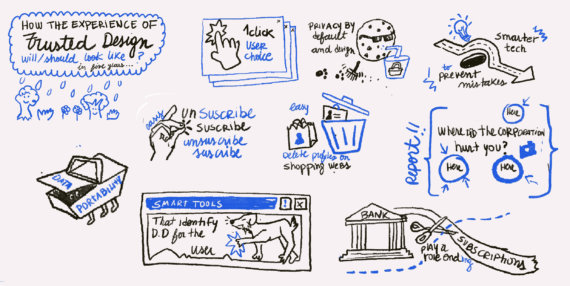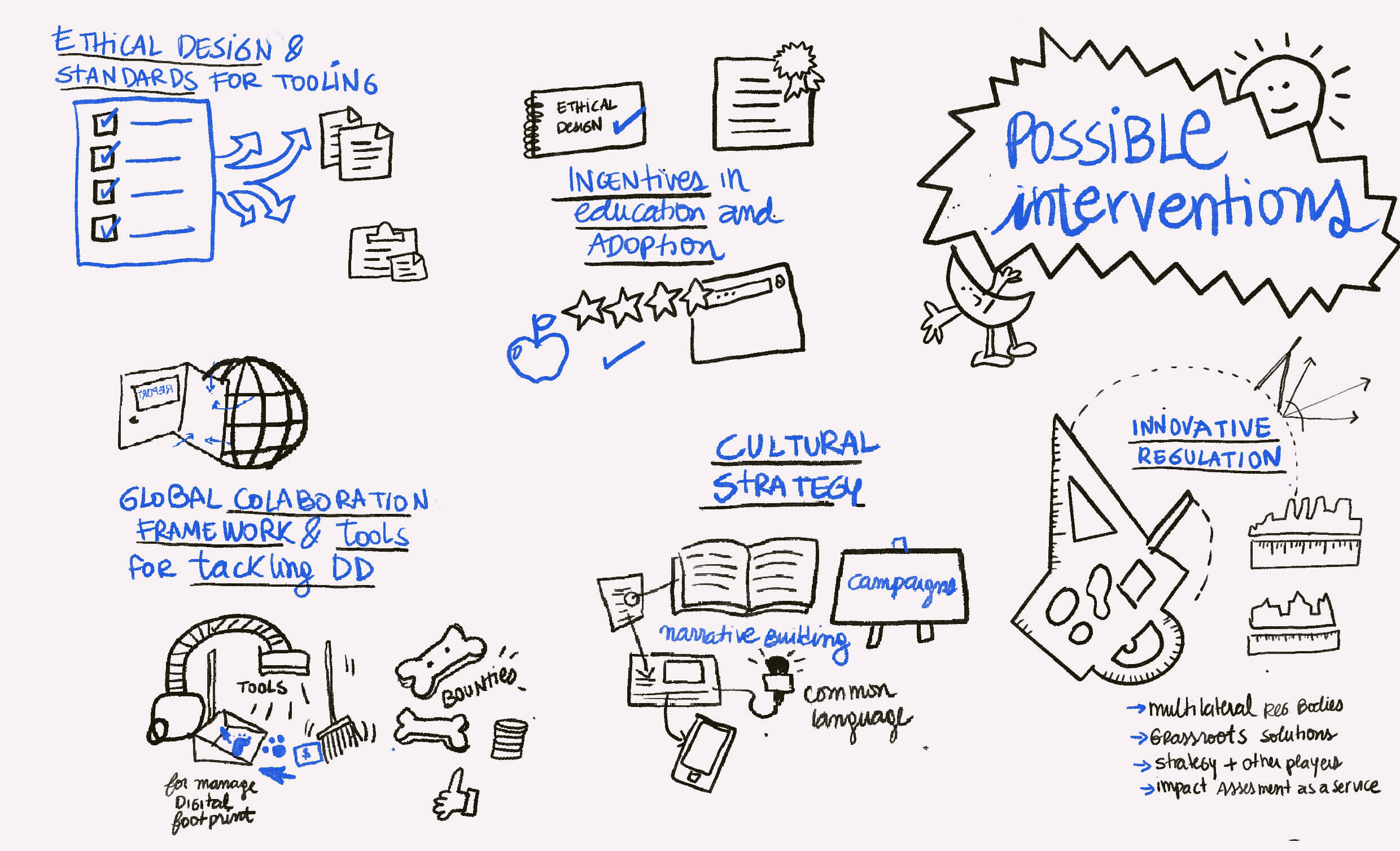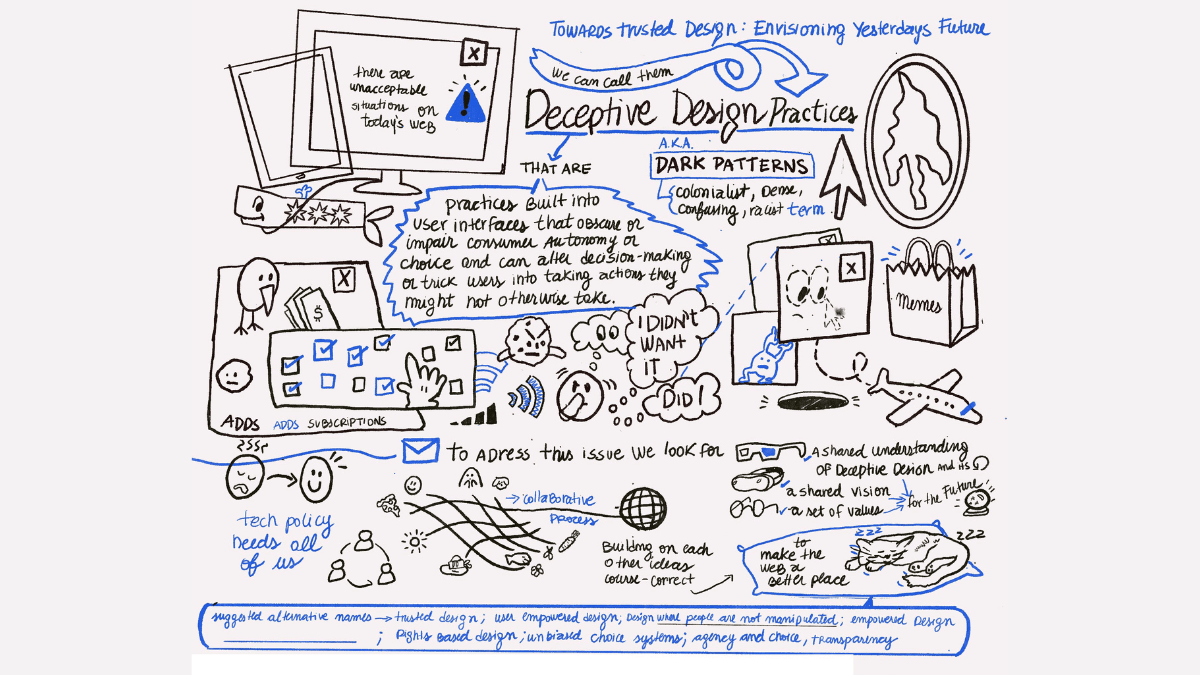This post was written by Janice Dean, 3×3; Kara Dunford, Web Foundation; Kaushalya Gupta, Web Foundation; and Megan Marini, 3×3.
Everything we do online is influenced by how the tools we use are built. And when practices that obscure or impair consumer autonomy or choice are built into user interfaces, altered decision making can be the result.
These practices have a name: deceptive design, also referred to as “dark patterns”. The Web Foundation’s Tech Policy Design Lab, the flagship initiative of the Contract for the Web, is tackling this widespread phenomenon to move toward more ethical and trusted design that puts people and their needs first.
As part of this process, the Web Foundation, in collaboration with design firms 3×3 and Simply Secure, recently held the first in a series of policy design workshops that brought together governments, tech companies and civil society actors to envision a future web with more ethical and trusted design and identify key opportunities that would enable such practices to be more widespread. We heard from over 25 participants from over 15 countries about their understanding of deceptive design and their vision for the future web we want. The diversity of participants representing many regions of the world allowed us to reflect on the varied experiences of deceptive design and how awareness and enforcement differ.
During the workshop, we first reflected on the lived experiences of deceptive design as a means for imagining an ideal near-future world based on trusted design. In order to ground visions and ideas in reality, participants mapped signals, or indicators for emerging trends that are predicted to grow in significance. Some recent signals witnessed include signals of movement building, product innovations that address data privacy and security, as well as increased regulation in regions such as the EU and California, although regulation still remains disjointed between regions and sectors and a challenge to coordinate among actors.
Using the signals, we brainstormed possible opportunities and components of systems or worlds that would support positive, desired signals and mitigate negative ones. Ideas ranged from ethical design guidelines and standards to incentives in education and innovative regulation.

Image credit: Constanza Figueroa Bustos
The group reflected that the experience of Trusted Design would utilize ongoing consent (“no means no”) and leave web users satisfied with their choices and in control of the decisions they make online (as well as their data).

The ideas that emerged from this initial workshop will serve as a launchpad for future Tech Policy Design Lab workshops and collaborations. Opportunity areas, and associated ideas for potential interventions, included the following:
- Responsible Design Guidelines and Standards
- Recognized guidelines and principles act as a goalpost for regulators and companies to follow and comply with. An example of a principle would be using opt-ins instead of opt-outs.
- Examples of how to apply more trusted design. An example of this may be: what an unsubscribe button should look like.
- Global Collaboration Framework/s and Tools for tackling Deceptive Design
- A common global working framework for users to identify and report issues and specific follow-up enforcement actions from identified actors
- Tools that leverage data standards to help people manage their digital footprint online
- Tools for identifying Deceptive Design/harms (i.e. portal to track problems)
- Incentives in education and adoption
- Global Accreditation for companies
- Certification for Designers and Product Managers
- Public Advocacy/Cultural Strategy
- Narrative Building, e.g. common language or design media
- Campaigns and competitions for Trusted/Responsible Design
- Digital Societal Journalism
- Innovative Regulation
- Multilateral regulatory bodies (with shared best practices)
- Grassroots solutions to regulation (pushing regulation to the city level)
- Strategy and roadmap for involving other players (Banking institutions)
- Design impact assessment test as a service
To learn more about these insights and further details about the workshop, download our takeaways from the session.
We’d like to thank all of the participants for their time and dedication to building a better web for everyone.
What’s next
In July, we’ll host our next policy design workshops. This will be followed by a prototyping phase where we will develop tangible recommendations towards public policy frameworks, standards, guidelines, and legislative principles for governments to adapt and adopt.
It is imperative that a truly inclusive global, human-centered, and multi-stakeholder approach is adopted in order to develop solutions that put people and their needs first—so we want to hear from you! To get involved in the Lab, register your interest.
For more updates, follow us on Twitter at@webfoundation and sign up toreceive our newsletter andThe Web This Week, a weekly news brief on the most important stories in tech.
Tim Berners-Lee, our co-founder, gave the web to the world for free, but fighting for it comes at a cost. Pleasesupport our work to build a safe, empowering web for everyone.
